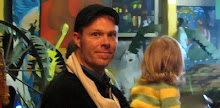Based on what we saw of Kara Walker, talking about the complexity of conflict, personal & local history, and narrative, consider your own history. I’m still new enough here to not really understand this vacation destination and the animosity towards vacationers that I hear from most students, but it’s clearly a complex dynamic. This community depends on the influx of money & visitors, and yet holds them in obvious contempt.
Using three simple silhouette images, create a narrative that explores that conflict. As always, I’d recommend starting from a point of personal experience, and then embellish beyond recognition if necessary. Build your images in illustrator, and we’ll project onto large sheets of paper, to be cut later. Your image will include:
- Two interacting figures of varying scale
- A clear figure/ground relationship
- Three objects that relate to either/both figure or ground
| Unity principles | effort/carefulness | Line quality of cut paper | Met requirements | Total 30 pts |
| 10 | 10 | 5 | 5 | |
